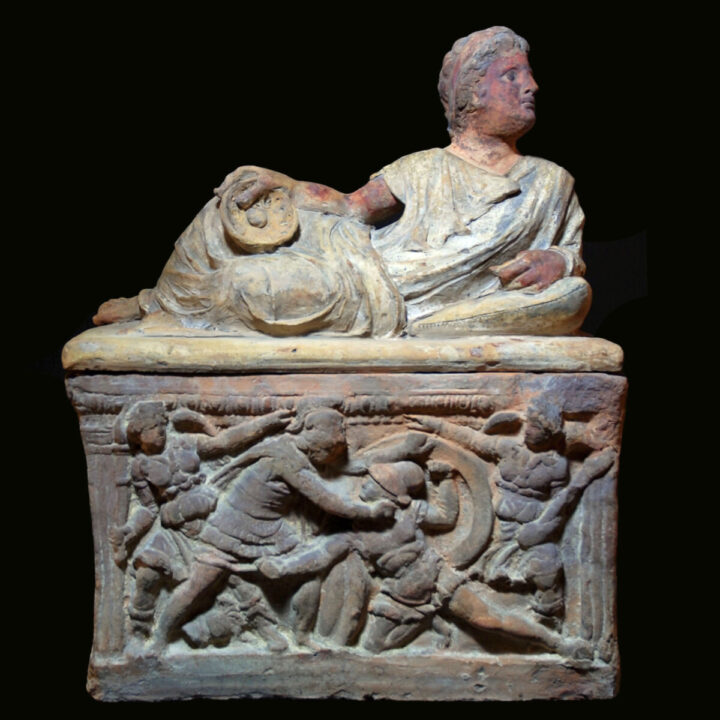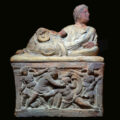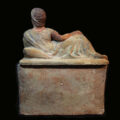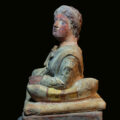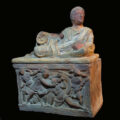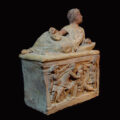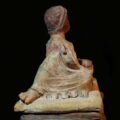Etruscan Ash Urn from Chiusi
Culture: Etruscan
Period: 2nd century B.C.
Material: Terracotta
Dimensions: 57.9 cm x 46.4 cm x 22.3 cm
Price: Sold
Ref: 4197
Provenance: French private collection Dr. Jean Lapourge (died in 1978), who practiced between 1920 and 1960 in Nice, France. Thence in a family estate. With French antiquities passport. With a TL test of 7 April 2023 confirming the age of the urn.
Condition: Except for ancient wear, especially on the right upper corner of the ash box intact and with magnificently preserved colors.
Description: Exceptionally large Etruscan terracotta ash urn with magnificently preserved colors dating to the Hellenistic period. The lid depicts the deceased reclining on a klinē. He supports himself on the left arm, which rests on a golden pillow. Fine stitching and the diligently painted pillow showcase wealth. Also, the clothes of the young man are exceptionally fine. He wears a white tunic with two decorative ribbons hanging down from the upper arms. A cape is thrown over the left shoulder and around his waist. The short curls are held together with a wreath, which was worn especially for the banquet. He holds an offering bowl in his right hand, which rests on the knee. The urn box itself depicts on the front a relief of the deadly duel between the brothers Eteocles and Polynices, worked out from a matrix. The sons of King Oedipus from Thebes shared the throne when their father had to abdicate. He incurred the wrath of the gods after murdering his father and having an incestuous relationship with his mother. Soon after, it came to a rift between the brothers, which culminated in a deadly duel, which is depicted here. Two female death demons guard with their torches on the sides, while Eteocles rams the sword into the neck of his brother, who is already kneeling. The dying Polynices defends himself with a sword strike from below, which subsequently also kills his brother. The scene is framed by two pilasters, which hold a cornice with egg-dart motives. This depiction is typical for urns from Chiusi. See: “Die Etrusker. Von Villanova bis Rom”, Florian S. Knauß and Jörg Gebauer (Hrsg.), Munich 2015, pages 265 ff. For a similar depiction of a young man see the urn in the British Museum with the Registration No. 1926,0324.124. With a TL test.



